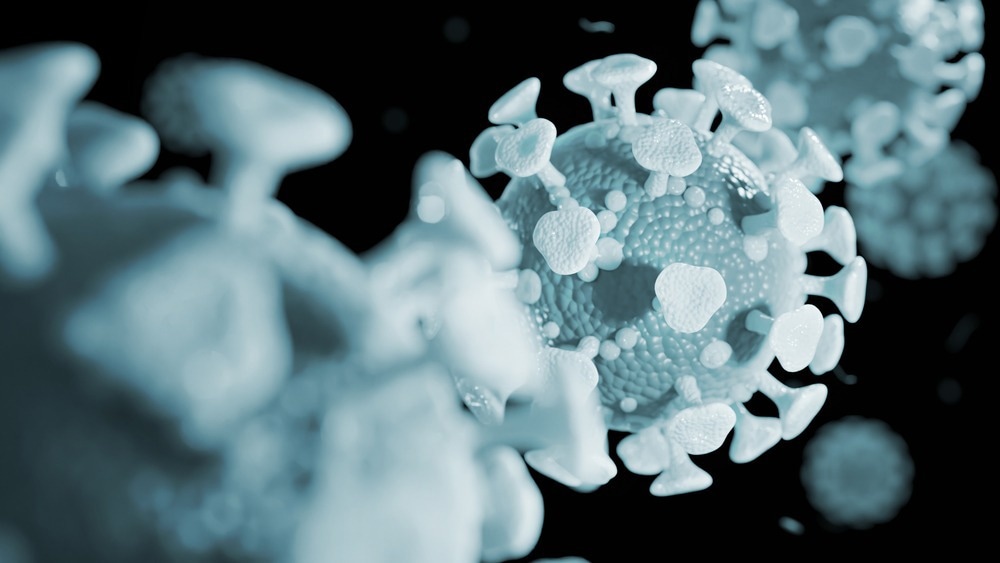In a recent study published in Vaccines, researchers developed an antigen detection kit to identify severe acute respiratory syndrome coronavirus 2 (SARS-CoV-2) Omicron variant of concern (VOC).
 Study: Development of an Antigen Detection Kit Capable of Discriminating the Omicron Mutants of SARS-CoV-2. Image Credit: Dotted Yeti/Shutterstock
Study: Development of an Antigen Detection Kit Capable of Discriminating the Omicron Mutants of SARS-CoV-2. Image Credit: Dotted Yeti/Shutterstock
Background
The continual emergence of novel coronavirus disease 2019 (COVID-19) vaccines has threatened the efficacy of vaccines and therapeutic agents aimed at COVID-19 mitigation. Early COVID-19 diagnosis and prompt treatment of affected individuals could aid in reducing the global burden of COVID-19. According to the WHO (World Health Organization), rapid antigen tests are adjuncts to COVID-19 diagnosis. The colloidal gold immune chromatography reportedly enables the detection of the Omicron subvariants in a simple, cost-swift, and cost-effective manner.
About the study
In the present study, researchers developed an antigen recognition kit based on the colloidal gold immunochromatography assays (CGIA) to detect Omicron subvariants.
BALB/c murine animals treated with beta-propiolactone were vaccinated with Omicron’s nucleocapsid protein. Post-fusion of immunological cells and myeloma cells, the team performed ELISA (enzyme-linked immunosorbent assay) to screen cells that were capable of monoclonal antibody production. The antigen detection kit was prepared based on CGIA assays, and the anti-interference property, specificity, and sensitivity were assessed by the stimulation of positive specimens.
Nucleocapsid protein was considered the target antigenic molecule to vaccinate the murine animals, and the team prepared highly stable and sensitive monoclonal antibodies using the hybridoma cellular screening method. They prepared the immunochromatography analysis testing strips, and the monoclonal antibodies were paired successfully for assembling the testing strips.
The least concentration required to obtain positive reports was considered the lowest limit of detection for the test kit sensitivity. Concentrations of inactivated SARS-CoV-2 cultures were identified by using several nucleic acid identification reagents. The clinical scenario of COVID-19 patients was simulated by obtaining nasal swab specimens of healthy individuals and incorporating a diluted solution of inactivated SARS-CoV-2.
Antibody pairs with high sensitivity were chosen, including antibodies that could identify the ancestral strain, Beta VOC, Delts VOC, and Omicron VOC strains, and antibodies with no Omicron subvariant detection ability. The antibodies were incorporated on a testing strip to produce one card having two lines for detection.
The antibody failing to identify the Omicron subvariant was denoted as T1, and the one possessing Omicron subvariant detection ability was denoted as T2. Based on the findings of the lines of detection, Omicron subvariants were identified. Further, 25.0 interfering substances, such as interferon-alpha, pure mucin, peramivir, oseltamivir, fluticasone, and lopinavir, were utilized to perform anti-interference colloidal gold strip identification.
Concerning the minimum permissible limit of detection, the team selected three SARS-CoV-2 cultures, with SARS-CoV-2 titers diluted to concentrations of 500.0 TCID50 (50.0% tissue culture infectious dose)/mL, 31 TCID50/mL, 63 TCID50/mL, 125.0 TCID50/mL, 250.0 TCID50/mL, and 500.0 TCID50/mL for initial identification. All dilutions were repeated more than 20.0 times. The colloidal gold dipstick stability was evaluated.
Oral cavity samples, pharyngeal swab samples, and nasal swab samples were obtained from ≥90 individuals infected with the novel CoV coronavirus (COVID-19 cases within one week of testing positive for novel CoV) in Chengdu. Nasal swab samples were tested with the strip, and oral and pharyngeal swab samples were tested with the novel CoV (2019-nCoV) nucleic acid identification kit based on the fluorescent readout of polymerase chain reaction (PCR) analysis].
Results
The sensitivity of the antigen detection kit could attain 63.0 TCID50/mL, with the good incorporation of several SARS-CoV-2 variants. No cross-reactions with commonly observed pulmonary pathogens were observed. The test sensitivity remained unaltered under the various concentrations and interferences, indicative of good stability and specificity of the antigen detection kit.
Antibody pair matching led to the detection of Omicron subvariants by antibodies, of which the sixth antibody pair showed the highest sensitivity, with a detection limit of 1.0:2.0 × 107. The limit of detection of Omicron subvariants’ culture was 1.0:2.0 × 105. Of note, the sensitivity of the colloidal gold identification card attained similar levels as nucleic acid detection reagent testing. The findings indicated that the antigen recognition kit met the requirements for clinical use.
Concerning the mixed Omicron subvariants, the two lines of detection did not yield false positive results. The findings showed that 48 viral organisms and other pathogenic organisms did not cross-interfere in the kit’s detection abilities, with no false negative reports.
The minimum value for the limit of detection of the colloidal gold kit for various viral strains was 63.0 TCID50/mL, indicative of the good incorporation of samples of various SARS-CoV-2 strains. Moreover, the detection of SARS-CoV-2 diluted cultures showed that by extending the storage up to>1.0 years, the test line’s color and the line for quality control of all testing strips were unchanged, indicative of real-time stability.
Conclusion
Overall, the study findings highlighted the design details of a simple, highly sensitive, strongly specific, rapid, and accurate antigen detection kit based on CGIA technology that could differentiate between novel coronavirus infection and Omicron subvariants.